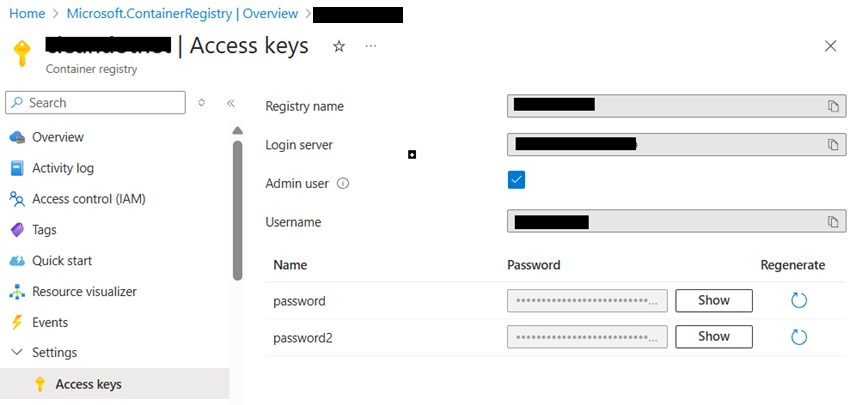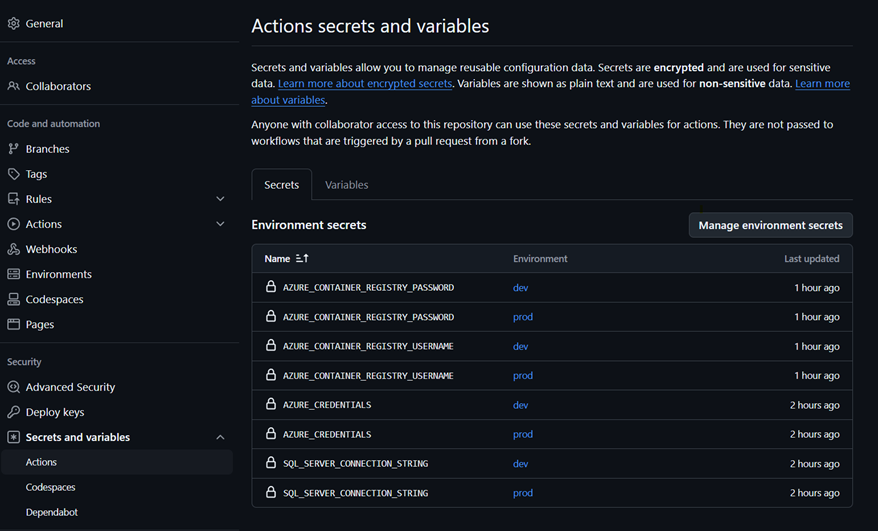Overview
The Clean.Net template includes pre-configured GitHub Actions pipelines for automated builds and deployments to Azure App Service. The template supports two deployment methods out of the box: Docker and Zip deployment, with built-in support for both development and production environments.
The deployment pipeline automatically determines the target environment based on the branch:
- Main branch: Deploys to production environment
- Other branches: Deploy to development environment
This environment-based deployment strategy enables continuous integration and deployment (CI/CD) while maintaining separation between development and production workloads.
GitHub Actions Pipeline
When you host your code on GitHub, the deployment pipeline is automatically made available through:
\.github\workflows\
- 📄 docker-build-deploy.yml.disabled
- 📄 zip-build-deploy.yml
The docker-build-deploy.yml.disabled ends with disabed extension as its disabled by
default. You
can rename it to
docker-build-deploy.yml to enable it. Deploying using the docker method will
require you to
setup an azure docker registry and configure the app service to use docker as the publishing
method. You should only have 1 of the 2 workflows enabled. Choose the deployment type you wish to
use and disable or delete the one you are not using.
Prerequisites
- Follow the instructions from Authenticate to Azure from GitHub to create the credentials
required
for the
AZURE_CREDENTIALSGithub Secret setup. - Go to your GitHub repository settings
- Navigate to "Environments" section
- Create two environments:
- prod - Production environment
- dev - Development environment
- Setup 2 Azure App Service instances, one for dev and the other for prod
- Review and Update the Github Actions workflow accordingly
- Setup the following secrets in the 2 enviroments below depending on the Deployment type you
choose
Zip Deployment Secrets
Secret Name Description Required AZURE_CREDENTIALSThe credentials required to login to azure to deploy the code to the app service Yes Docker Deployment Secrets
Secret Name Description Required DOCKER_REGISTRY_SERVER_USERNAMEAzure Container Registry Username Yes DOCKER_REGISTRY_SERVER_PASSWORDAzure Container Registry Password Yes AZURE_CREDENTIALSThe credentials required to login to azure to deploy the code to the app service Yes The Docker Registry Server Username and Password can be obtained from the container registry under theAccess keystab: Here's an Example of the GitHub Enviroment Secret setup:
Here's an Example of the GitHub Enviroment Secret setup: